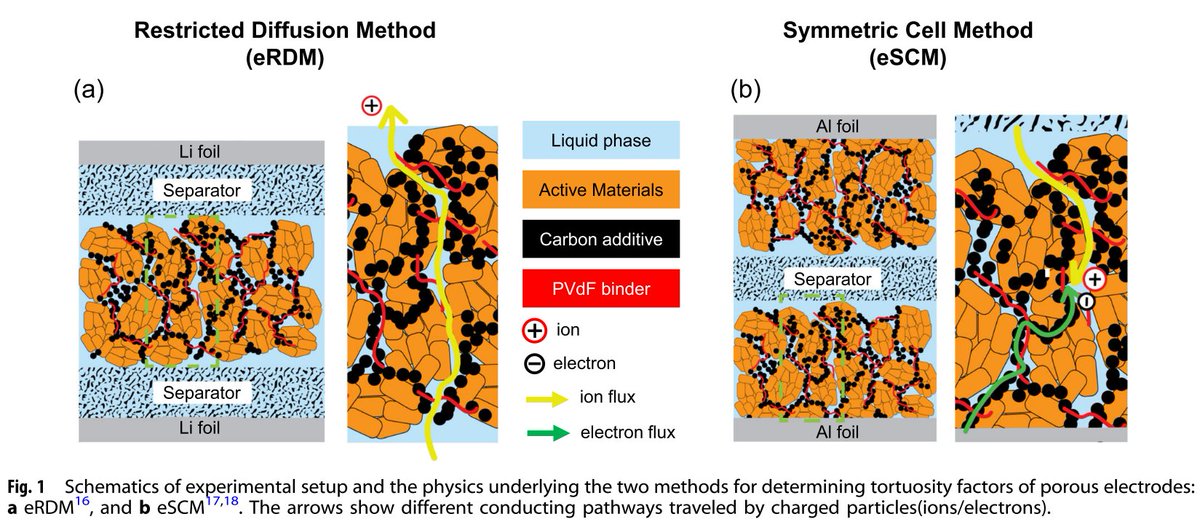"The electrode tortuosity factor: why the conventional tortuosity factor is not well suited for quantifying transport in porous Li-ion battery electrodes and what to use instead"
nature.com/articles/s4152…
You should all follow the superb lead author Tu - @ttu13e

Firstly, ignore geometric "path length" type tortuosities, they're a waste of time for real electrodes. Secondly, double ignore the Bruggeman correlation - Bruggeman didn't think it's relevant and neither should you. #ChangeMyMind
sciencedirect.com/science/articl…
* The conventional tortuosity factor is not the ideal metric for electrodes (but it's still good for separators).
* There are simplifications in \tau_e too... but you only get 1 metric to encode microstructural complexity in your 0/1/2D models... \tau_e should be it!
* Electrochemistry experiments like the eSCM are surely the best way to measure tortuosity factors (not indirectly via 3D imaging/simulations); however, 3D imaging allows us to explain, model and optimize.










